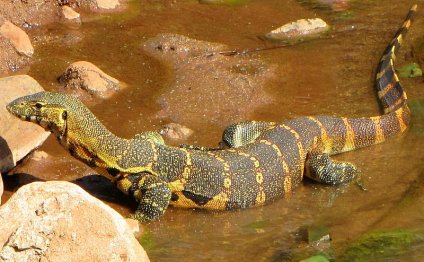
Best pet monitor lizards
 Monitors are opportunistic carnivores and insectivores meaning they eat whatever animals and insects are available. In the wild, monitors eat reptiles, small mammals, insects, eggs, birds, crustaceans, fish, turtles, and even dead animals. The primary food of a monitor varies based upon its habitat.
Monitors are opportunistic carnivores and insectivores meaning they eat whatever animals and insects are available. In the wild, monitors eat reptiles, small mammals, insects, eggs, birds, crustaceans, fish, turtles, and even dead animals. The primary food of a monitor varies based upon its habitat.
The foods you feed your pet will vary based upon his size. Smaller monitors will need smaller food than larger ones. You should also try to offer a variety of different foods to help ensure he has a well balanced diet.
Insects
Live crickets, mealworms, waxworms, cockroaches, and grasshoppers are a good source of protein and other nutrients for your monitor. Be sure to gut-load the insects before feeding them to your pet. Gut-loading is when you feed the insects a nutritious food which will then be passed to your reptile when the insects are eaten. There are a variety of gut-loads available.
Commercial Food
There is commercially available monitor food that you can get at pet stores. The commercial food is often soft bite-sized pieces of high protein food supplemented with calcium and other nutrients. It makes a great emergency food when you are unable to make it to a store and is also a great way to add variety to your pet’s diet.
Mice
Mice are readily available and can be a source of food for your companion. Be sure to get the correct size mice since you do not want to feed your reptile food that is too large. Large food can potentially get impacted in your pet’s digestive system. Luckily, mice are available as tiny pinkies, adults, and all sizes in between.
When possible, you should feed your monitor mice that have been pre-killed. It is safer for your pet and more humane for the mice. Even though mice are small they can bite, scratch, and possibly injure your pet.
Frozen mice are a great way to supply your monitor with food. Several weeks or months worth of food can take up very little space in a freezer. Be sure to thaw frozen mice before feeding them to you companion. They can be easily and quickly thawed with warm water.
Other Foods
There are other foods available at a grocery store that can add variety to your monitor’s diet. Fish, shrimp, crab meat, turkey, chicken, and eggs can all be fed raw to your pet. Make sure that any food is prepared as bite sized pieces or ground up.
Water
Your monitor will need a source of fresh water. A water dish should be available at all times. For tropical monitors who require a bathing area with warm water, a water dish should still be supplied.
Misting is another option for supplying your pet with water. A spray bottle with fresh clean water and a daily misting might be greatly enjoyed and preferred by your monitor.
Supplements
Calcium and vitamin D3 and a reptile multivitamin are supplements that help make sure your pet is getting everything he needs to stay healthy. The supplements are usually a powder than can be easily sprinkled onto his food a couple times per week. Use supplements in moderation. Too much supplementation is just as bad as none at all.
RELATED VIDEO



Share this Post
Related posts
Colorful lizard
A very large species of chameleon that is endemic to forests in eastern and northern Madagascar. They reach up to 68 cm (27…
Read MorePet monitor lizards
Monitors are hardy lizards that can live long and happy lives. By supplying your monitor with proper care, food, habitat…
Read More











